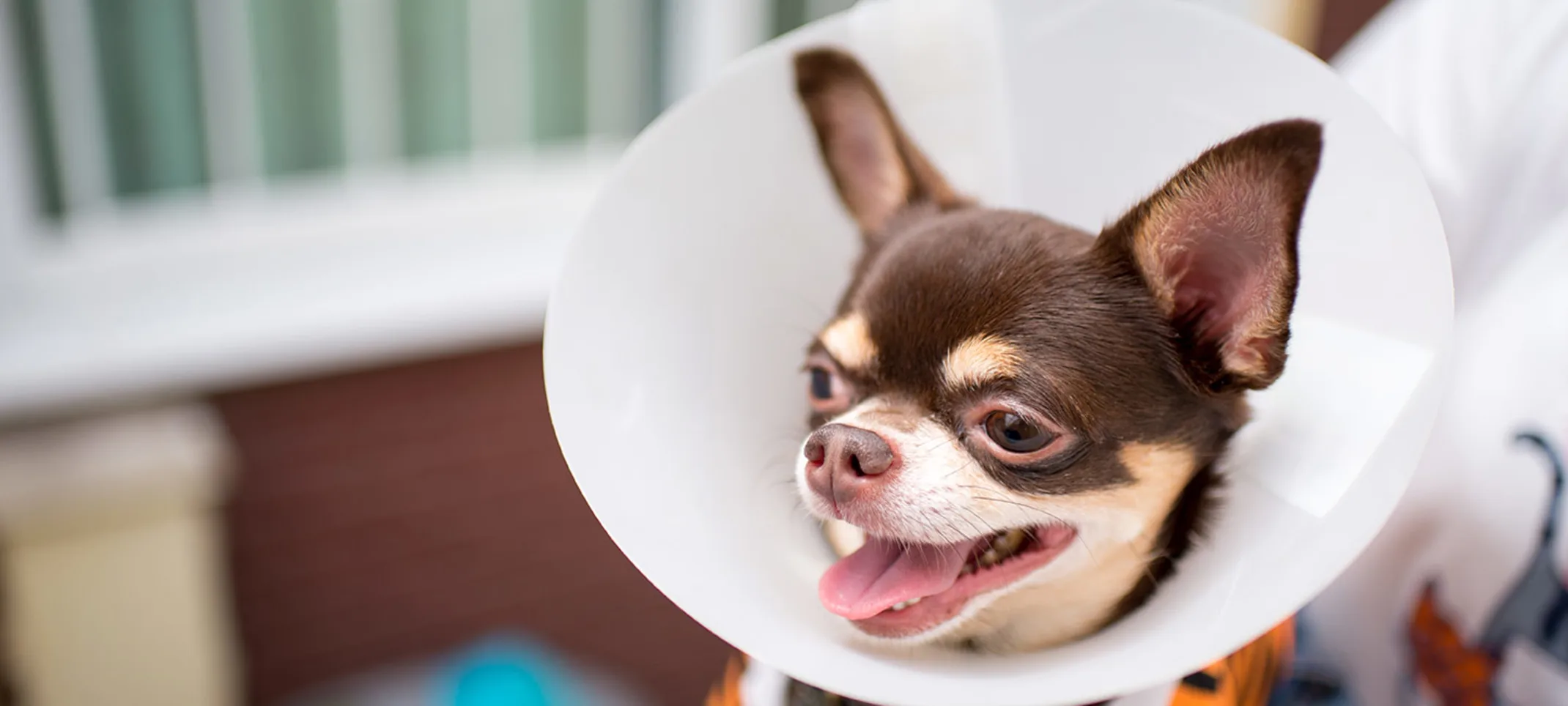Surgery
While not all health problems that your pet may have will require surgery, it is sometimes the best course of action. At AVECCC we are prepared to handle any emergency surgery your dog or cat may need.

Please note that not all surgical procedures can be performed on an emergency basis and a board-certified surgeon may be recommended. AVECCC's experienced emergency veterinarian will discuss your pet's surgical options with you so that you can make the best medical plan for your pet. Our sister hospital, ARISE Veterinary Center, has a board-certified surgeon on site for consultation and complex surgical procedures.
Surgical Procedures Offered
Some of the most common procedures that we offer include:
Laceration and bite wound repair
A laceration is typically caused by a sharp object penetrating your pet's skin and can be superficial or go deep into the tissue below their skin. When a laceration or bite wound requires surgical attention, our team will clean the affected area and then close the wound. Depending on the severity of your pet's wound, laceration and bite wound repair surgeries may be performed under local or general anesthesia.
Gastrointestinal surgeries including foreign body removal and GDV correction
A foreign body surgery is a surgical procedure that involves the removal of an object from a pet's digestive tract that will not pass on its own.A veterinarian can determine through touch or x-rays if your pet has consumed a foreign object. Depending on where the object is, the veterinarian may need to open the stomach or intestines to remove it, or will have to perform an endoscopy to remove it from the esophagus.
Gastric dilation-volvulus syndrome (GDV) is an acute, life-threatening disorder in dogs that occurs when the stomach twists on its axis and causes gastric gases to build up. GDV is a medical emergency and dogs suffering from this disease should receive surgical treatment as soon as possible to decompress the accumulated gastric gases and correct the position of their stomach.
Ocular surgeries including enucleation (removal of the eye) and temporary tarsorrhaphy (temporary surgical closure of the eyelid)
Just like humans, animals are susceptible to eye diseases, vision problems, and degenerative conditions. Unfortunately, some of those eye problems can require surgery to fix them. The two ocular surgeries that we perform the most often are enucleation (removal of the eye) and temporary tarsorrhaphy (temporary surgical closure of the eyelid).
Enucleation may be the best option for your pet if they suffer from conditions such as blinding painful glaucoma, severe trauma, and intraocular malignancy. Temporary tarsorrhaphy is a surgical procedure in which a veterinary surgeon sews together the upper and lower eyelids to keep the eye closed. This is typically done to provide protection to the surface of your pet's eye while it heals from an injury or other surgical procedure.
Reproductive surgeries including emergency ovariohysterectomy for pyometra and C-section
Pyometra is a dangerous medical condition in which your pet's uterus becomes infected with bacteria and fills with pus. When your pet is affected by pyometra, we can perform an ovariohysterectomy (removal of the uterus and ovaries) to prevent the infection from spreading. If your pet is pregnant and unable to give birth naturally, a caesarean section (C-section) may be recommended. This is a major surgery that is performed to safely remove pups from your pet's uterus.
Splenectomy
Splenectomy is the surgical removal of the spleen. Your dog or cat may need a splenectomy to treat splenic neoplasia, rupture, torsion, or abscesses. Depending on the severity of your pet's condition, the splenectomy may be done laparoscopically or as part of a full open abdominal exploratory surgery.
Placement of thoracostomy tubes, temporary tracheostomy tubes, esophageal feeding tubes, and hemodialysis catheters
There are many reasons why your pet may require the assistance of a thoracostomy tube, esophageal feeding tube, or hemodialysis catheter. Thoracostomy tubes are surgically inserted into your pet's chest in order to drain excess fluid or air that has built up. Esophageal feeding tubes are surgically inserted into your pet's throat in order to get them nutrients when they are unable to feed themselves. Hemodialysis catheters are small tubes that are surgically inserted into one of your pet's veins, typically their jugular, in order to administer dialysis.
